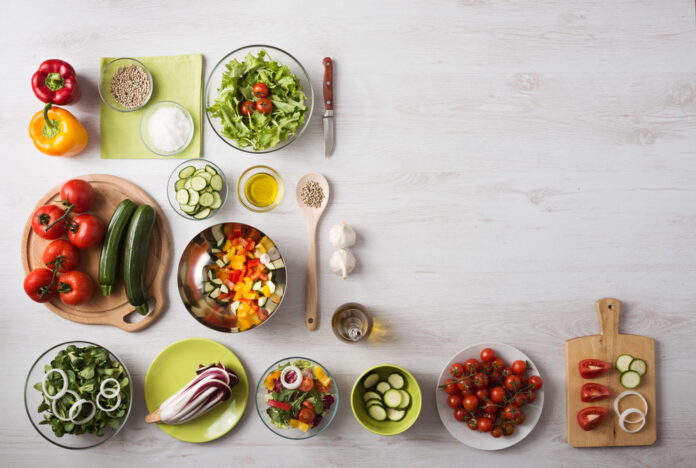Embracing the rhythm of the seasons in your kitchen not only enhances the flavors of your dishes but also connects you to the natural cycle of produce. Cooking with seasonal ingredients ensures that you’re using fruits and vegetables at their peak freshness, which translates to more delicious and nutritious meals. Moreover, it supports local farmers and is often more cost-effective.
The Benefits of Seasonal Cooking
Using seasonal produce means enjoying ingredients when they’re most abundant and flavorful. This approach retains peak freshness and supports local communities by reducing the travel distance of foods. Seasonal ingredients often require simpler preparations, allowing their natural tastes to shine without excessive seasoning or complicated cooking methods.
Spring: A Time of Renewal
As the earth awakens from winter, spring brings a variety of fresh greens and delicate flavors.
Ingredients to Explore:
- Asparagus: Perfect for grilling or roasting.
- Peas: Sweet and tender, ideal for salads and pastas.
- Green Garlic: A milder version of garlic, excellent in sautés and dressings.
Cooking Tips:
Celebrate spring produce by incorporating fresh ingredients into simple dishes to retain their natural flavors. For example, try tossing freshly cooked pasta with sautéed green garlic, peas, and a light butter sauce for a quick and satisfying meal.
Summer: Bask in Abundance
Summer offers a bounty of vibrant fruits and vegetables, full of color and taste.
Ingredients to Explore:
- Tomatoes: Juicy and sweet, they are the star of many summer dishes.
- Zucchini: Versatile for grilling, sautéing, or baking.
- Berries: Strawberries, blueberries, and raspberries are at their best.
Cooking Tips:
Utilize spices that complement summer produce, such as toasted curry sesame seeds on grilled zucchini or a sprinkle of madras curry powder in a refreshing cucumber salad. Experiment with fresh salsas and fruit salads to make the most of the season’s offerings.
Fall: Embrace Hearty Flavors
With the onset of cooler weather, fall brings ingredients that are perfect for warming dishes.
Ingredients to Explore:
- Pumpkins: Great for soups, pies, and roasting.
- Apples: Ideal for desserts, sauces, and salads.
- Brussels Sprouts: Delicious when roasted with a balsamic glaze.
Cooking Tips:
Autumn is the perfect time to explore hearty soups and stews featuring root vegetables. Roasting brings out the natural sweetness of fall produce; try roasting pumpkin or sweet potatoes with herbs and spices for a comforting side dish. Incorporate grains like couscous or rice to create substantial salads or stuffed vegetable dishes.
Winter: Comfort in the Cold
Winter’s chill calls for nourishing meals that warm from within.
Ingredients to Explore:
- Root Vegetables: Carrots, parsnips, and turnips are at their sweetest.
- Leafy Greens: Kale and collards thrive in cooler temperatures.
- Citrus Fruits: Oranges, lemons, and grapefruits offer bright flavors.
Cooking Tips:
Leverage the robust flavors of winter vegetables in hearty dishes. Enhance your meals with unique spices like timut peppercorns or herbes de Provence salt. Slow-cooked stews, roasted vegetable medleys, and citrus-infused baked goods are excellent choices during this season.
Tips for Cooking with Seasonal Ingredients
- Visit Local Farmers’ Markets: You’ll find the freshest produce and perhaps discover new ingredients.
- Plan Your Meals Around Seasonal Produce: Let the ingredients guide your menu rather than the other way around.
- Simple Preparations Are Best: Use minimal seasoning to let the natural flavors shine.
- Preserve Abundant Produce: Learn canning or freezing techniques to enjoy seasonal flavors year-round.
- Be Flexible and Creative: Seasonal cooking invites experimentation. Substitute ingredients based on what’s available and fresh.
Recipe Inspiration
- Spring Vegetable Pasta: Combine asparagus, peas, and a light lemon sauce over pasta for a refreshing meal.
- Summer Berry Salad: Mix fresh berries with mint and a drizzle of honey.
- Autumn Stuffed Squash: Fill roasted acorn squash with a mixture of rice, nuts, and dried cranberries.
- Winter Root Vegetable Stew: Simmer carrots, parsnips, and potatoes with hearty herbs for a comforting dish.
Conclusion
Cooking with seasonal ingredients not only maximizes flavor but also brings a sense of harmony with nature’s cycles. It’s a delicious way to enjoy a variety of foods throughout the year, support sustainable practices, and perhaps even save on your grocery bill. So next time you’re planning meals, consider what’s in season and let the freshest ingredients inspire your culinary creations.
By embracing seasonal cooking, you invite freshness, flavor, and sustainability into your kitchen.


